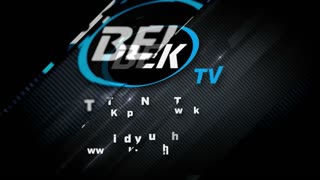Premium Only Content

Saturday Zoom: BCI: Brain-Computer Interface
Every neural-prosthetics lab has its own brain-decoding algorithm, but could one size fit all?
Earlier this year in a lab at Duke University, in Durham, N.C., a clever, raisin-gobbling monkey named Idoya made a robot move in Japan—just by thinking. And she wasn’t alone. She joined ranks with, among others, a paraplegic man who recently used his brain to move a cursor around a computer screen.
Researchers have endowed subjects with seemingly telekinetic powers by extracting the patterns of brain activity that occur when we move parts of our bodies. However, those patterns are tapped electronically, algorithms are needed to interpret them and discern their salient features so that the appropriate signals can be sent to external devices. Groups working on brain-machine interfaces have designed brain decoders differently, depending on the type of neural data they collect and the purposes of their research. As a result, most algorithms have to be written from the ground up. But some in the field say it’s time to develop a generic algorithm that will incorporate the best work of the last decade and serve as a foundation for all labs working on neural prosthetics.
The early 2000s saw the advent of optogenetics, a groundbreaking technique that allows scientists to stimulate or inhibit neural activity with beams of light instead of invasive electrodes. That led to even more advances in neurobiology; for example, by activating certain neurons or neural circuits in mice, researchers have been able to treat stroke or enhance or remove certain memories.
Now a trio of scientists at UC Berkeley are taking brain–machine interfaces to a new level, with a powerful platform that incorporates optogenetics and computer-generated holography in a way that shows promise as a high-throughput, high-precision technique for communication with the brain. The scientists believe it could become a powerful research tool for understanding how the brain is wired and could eventually be used to design therapies to treat brain diseases and disorders rooted in the malfunction of neural circuits.
This system draws on the collective expertise of Laura Waller, an expert in computational imaging; Rikky Muller, whose lab focuses on microelectronics for neural interfaces; and Hillel Adesnik, a professor of neurobiology who studies the neural basis of perception. Waller and Adesnik are Chan Zuckerberg Biohub San Francisco Investigators, and overlapped with Muller, who is now an alum of the Biohub Investigator Program.
History of Cory Hall UC Berkeley:
Named for Clarence L. Cory, dean of the College of Mechanics and a faculty member for almost 40 years, Cory had a fifth floor added in 1985, the exterior of which features a computer chip-inspired design motif. The building houses a state-of-the-art electronic micro-fabrication facility and labs devoted to integrated circuits, lasers, and robotics. Cory has the dubious distinction of being the only site bombed twice by “Unabomber” Theodore Kaczynski in the 1980s.
-
 2:33:06
2:33:06
Rehypothecation1
7 days agoSTAR CHAMBER EPISODE: Erin Valenti, age 33
7222 -
 52:16
52:16
American Thought Leaders
19 hours agoIs There a Link Between Mass Shootings and SSRIs?
35.5K38 -
 17:12
17:12
World2Briggs
19 hours ago $0.04 earnedTop 10 Towns You Can Retire or Live on $1900 a month in the Midwest #1
19.8K8 -
 17:25
17:25
BlackDiamondGunsandGear
1 day agoCustom Building the Cheapest MP5
29.5K1 -
 2:07:20
2:07:20
BEK TV
1 day agoTrent Loos in the Morning - 11/06/2025
28.5K1 -
 8:10
8:10
The Shannon Joy Show
19 hours agoShould we even VOTE anymore?
29.4K34 -
 59:34
59:34
Dialogue works
1 day ago $0.03 earnedMohammad Marandi: It’s WAR: Iran’s Supreme Defense Council ACTIVATES –Hezbollah REFUSES to Surrender
60.7K13 -
 10:23
10:23
TheSaltyCracker
19 hours agoMuslims Immediately Threaten New Yorkers After Zohran Win
59K483 -
 18:40
18:40
Actual Justice Warrior
19 hours agoMamdani Pledges To DESTROY New York
41.1K90 -
 28:53
28:53
iCkEdMeL
18 hours ago $0.06 earnedBREAKING: 9 DEAD After UPS Plane BURSTS Into Fireball at Louisville Airport
41.3K8